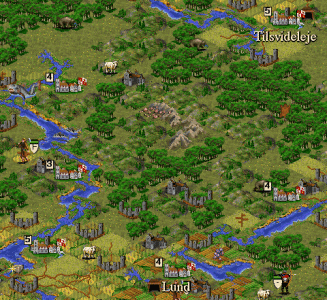Morten Blaabjerg
Settler
"Acts like a theatre in every city" strikes me as very appropriatekobayashi wrote:
how can the inquisition be represented by universal sufferage?
 -There are a lot of built-in jokes like that... Also, my reasoning is that since holy empires are representations of the great catholic powers of later medieval times (think Spain, France), the inquisition comes along as a wonder that can tame some of the unhappiness problems stemming from increased unhappiness and the cancellation of the great happiness wonders
-There are a lot of built-in jokes like that... Also, my reasoning is that since holy empires are representations of the great catholic powers of later medieval times (think Spain, France), the inquisition comes along as a wonder that can tame some of the unhappiness problems stemming from increased unhappiness and the cancellation of the great happiness wonderswith Heresy and Peasant Revolt among other factors. (this part of the tree is constructed to give an idea of the uprisings and crises of the late middle ages (and different ways of solving these problems -switching to protestantism will solve all happiness problems, and some financial problems (by the acquisition of church holdings) -but banking, fine arts, colonialism and better trade are another ways to solve some of these problems)
If banking is basically systems of credit and financing, it was increasingly high business in the 14th/15th centuries, playing a large part in big mercantile ventures and big politics in financing wars etc. -originating with the north italian city trade republics/oligarchies, and the dutch merchant states.I think banking appeared much later
According to my sources, the blast furnace was introduced in the 14th century, a key metallurgical step for large-scale production of iron (cast iron), used in combination with 'blooming' in the production of armor, and in the development and manufacture of cannon and shot. So I considered it reasonable as a key preq for large scale production of cannon etc. (the first use of cannon appears as early as 1346, IIRC).techumseh wrote:
I suggest "bellows" instead of "blast furnace", a 19th century invention.
Along with the huge demands for metal in armoury and coinage in the 14th/15th century, it contributed to a boom in european mining technologies which made possible further advances in metallurgy.
Here's a quick reference :
http://scholar.chem.nyu.edu/~tekpages/ironworking.html
I think the powering of bellows etc. is accounted for in the advantage of the waterwheel improvement.
However, maybe I should use the blast furnace as a preq for gunnery/firearms instead, and introduce the bombard earlier?







